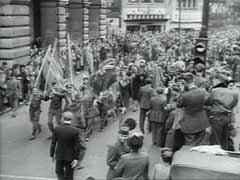You searched for: 代google霸屏竞价投放包上【TG飞机:@bapingseo】加納谷歌霸屏优化【TG电报:@bapingseo】乌拉圭谷歌霸屏推广【Telegram:@bapingseo】AG视讯的网址qy88vip千赢国际手机登录?8Oj0mR/030623.html
<< Previous | Displaying results 101-125 of 593 for "代google霸屏竞价投放包上【TG飞机:@bapingseo】加納谷歌霸屏优化【TG电报:@bapingseo】乌拉圭谷歌霸屏推广【Telegram:@bapingseo】AG视讯的网址qy88vip千赢国际手机登录?8Oj0mR/030623.html" | Next >>
-
Young children in the Stuttgart displaced persons camp
PhotoElementary school-age members of Hashomer Hatzair in the Stuttgart displaced persons camp, circa 1946–1949. Lova Warszawczyk is standing in the center.
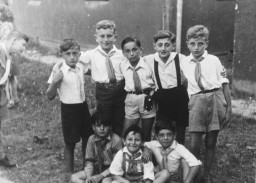
-
Magda Rein
ID CardMagda was the oldest of two children born to observant Jewish parents. They lived in Satoraljaujhely, a town in northeastern Hungary on the Czechoslovakian border. Jews represented some 20 percent of the town's approximately 18,000 persons. Magda's father owned a bakery; her mother was a midwife. 1933-39: At 10 years of age, Magda began accompanying her mother when she attended to births nearby. Her mother helped all women--Jews, Roma (Gypsies) and peasants in the surrounding villages. When Magda was 12,…

-
Mendel Rozenblit
ID CardMendel was one of six children born to a religious Jewish family. When Mendel was in his early 20s, he married and moved with his wife to her hometown of Wolomin, near Warsaw. One week after the Rozenblits' son, Avraham, was born, Mendel's wife died. Distraught after the death of his young wife and left to care for a baby, Mendel married his sister-in-law Perele. 1933-39: In Wolomin Mendel ran a lumber yard. In 1935 the Rozenblits had a daughter, Tovah. When Avraham and Tovah were school age, they began…

-
Betty Leiter Lauchheimer
ID CardBetty was one of 14 children born to a religious Jewish family in Aufhausen, a village in southwestern Germany. Her father was a successful cattle dealer in the area. On May 8, 1903, at age 20, Betty married Max Lauchheimer, a cattle merchant and kosher butcher. They lived in a large house by an orchard in the village of Jebenhausen. Betty and Max had two children, Regina and Karl. 1933-39: In late 1938 Betty and Max were visiting their daughter in Kippenheim when police arrested Max and their son-in-law.…
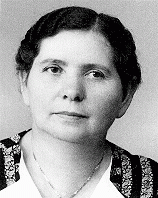
-
Moses Rechnitz
ID CardThe younger of two children, Moses was born to Jewish parents living in the southwestern Polish town of Bedzin. When he was 7, his family moved to the nearby city of Katowice where his father had a wholesale leather business. The Rechnitzes lived in a three-bedroom, upper-floor apartment on Jordana Street. Moses attended a Polish elementary school and also received religious instruction. 1933-39: In secondary school, Moses was one of the only Jewish pupils. He first encountered antisemitism when a teacher…
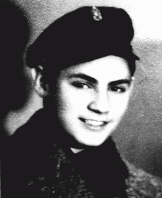
-
Leopold Page describes meeting German industrialist Oskar Schindler
Oral HistoryLeopold was a teacher in Krakow, Poland, when World War II began in 1939. While serving in the Polish army, he was captured by Germans. Leopold escaped from a prisoner-of-war transport. Soon after, he met the German industrialist Oskar Schindler. The two became friends. Leopold was forced to live in the Krakow ghetto. He later worked in Schindler's factory in Bruennlitz. He and the other Jews who worked there were treated relatively well and protected from the Nazis. After the war, Leopold moved to the…

-
SS and the Holocaust
ArticleLearn more about the SS and the organization’s involvement in perpetrating the Holocaust.
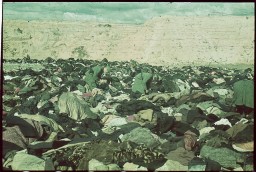
-
Theresienstadt: Key Dates
ArticleExplore key dates in the history of the Theresienstadt camp/ghetto, which served multiple purposes during its existence from 1941-45.
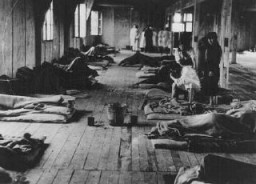
-
Blechhammer
ArticleThe Germans established the Blechhammer camp as a subcamp of Auschwitz in April 1941. Learn about the camp's history and conditions there.
-
Klaus Barbie: The Butcher of Lyon
ArticleKlaus Barbie, chief of the Gestapo in Lyon, France, was nicknamed the "Butcher of Lyon" for his brutal actions towards Jews and members of the French Resistance.
-
Nazi Party Platform
ArticleThe Nazi Party Platform was a 25-point program for the creation of a Nazi state and society. Hitler presented it at the Hofbräuhaus Beerhall in Munich in February 1920.

-
The Vélodrome d'Hiver (Vél d'Hiv) Roundup
ArticleThe Vélodrome d'Hiver (or Vél d'Hiv) roundup was the largest French deportation of Jews during the Holocaust. It took place in Paris on July 16–17, 1942.
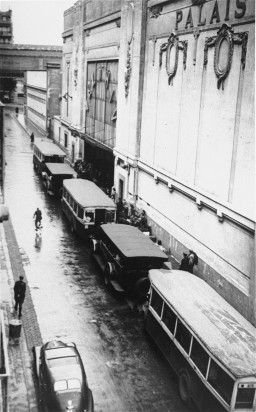
-
Elie Wiesel Timeline and World Events: 1928–1951
ArticleSurvivor Elie Wiesel devoted his life to educating the world about the Holocaust. Learn about key events in the world and his life from 1928–1951.

-
Hajj Amin al-Husayni: Key Dates
ArticleKey dates associated with Hajj Amin al-Husayni, former Mufti of Jerusalem who participated in a pro-Axis coup in Iraq in 1941. Explore further

-
Operation Torch: The Anglo-American Invasion of French North Africa
ArticleOperation Torch was the Allied invasion of French Morocco and Algeria during the North African Campaign of World War II. Learn more.
-
Theresienstadt: Final Weeks, Liberation, and Postwar Trials
ArticleThe Theresienstadt camp-ghetto existed from 1941 to 1945. Learn about its final weeks, liberation, and the postwar trials of SS commandants and other staff.
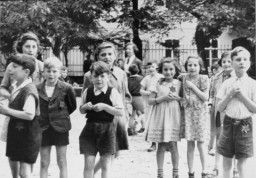
-

-
1938: Key Dates
ArticleExplore a timeline of key events in the history of Nazi Germany during 1938.

-
Chelmno - Photographs
Media EssayThe Chelmo killing center in German-occupied Poland was the first stationary facility where poison gas was used for the mass murder of Jews. The SS and police began killing operations at Chelmno on December 8, 1941. At least 172,000 people were kill...
-
Chelmno (Abridged Article) - Photographs
Media EssayThe Chelmo killing center in German-occupied Poland was the first stationary facility where poison gas was used for the mass murder of Jews. The SS and police began killing operations at Chelmno on December 8, 1941. At least 172,000 people were kill...
-
9th Armored Division
Media EssayThe 9th Armored Division is recognized as one of the 36 liberating units of the US Army during World War II. On May 8, 1945, troops of the 9th and 1st Infantry Divisions liberated two subcamps of the Flossenbürg conce...
-
Chelmno
Media EssayThe Chelmo killing center in German-occupied Poland was the first stationary facility where poison gas was used for the mass murder of Jews. The SS and police began killing operations at Chelmno on December 8, 1941. At least 172,000 people were kill...

-
Buchenwald trial document
ArtifactDocument from the Buchenwald trial stating that both the prosecution and the defense teams agree to waive their right to make closing statements. The document is signed by the US military prosecutors (including William Denson), the defense lawyers, and the defendants. Dachau, Germany, August 8, 1947.
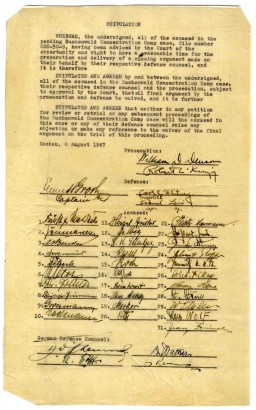
-
Election poster
ArtifactThis election poster calls on Germans to vote in support of Hitler's hand-picked candidates to the Reichstag (the German parliament). The poster details Hitler's actions and reads, in part: 'In 8 months two and a quarter million Germans have work and bread again! Class warfare and its parties are eliminated! The Bolsheviks are smashed. Particularism is overcome! A Reich of order and cleanliness is established. One People. One Reich. One Leader. This is what Hitler has accomplished..."

-
Victory in Europe!
FilmGermany's formal surrender on May 7 and VE-Day (Victory in Europe Day) on May 8, 1945, were marked by joyous celebrations all over Europe. This footage shows streets in Paris and London filled with people celebrating the unconditional Allied victory over Nazi Germany and the winning of the war in Europe.
